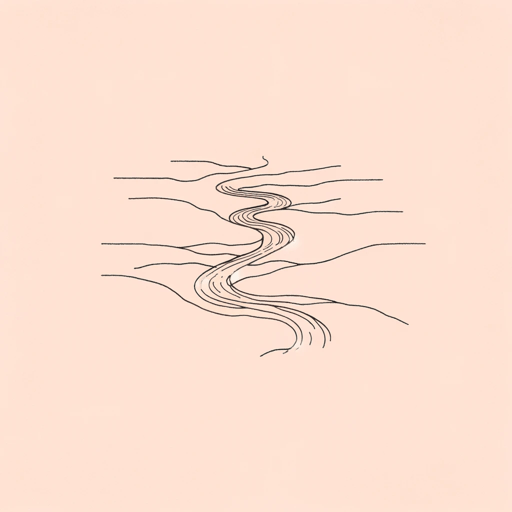28 pages • 56 minutes read
Linda PastanDreams
Fiction | Poem | Adult | Published in 1979A modern alternative to SparkNotes and CliffsNotes, SuperSummary offers high-quality Study Guides with detailed chapter summaries and analysis of major themes, characters, and more.
Summary and Study Guide
Oveview
Poetry magazine published “Dreams” by Jewish-American writer Linda Pastan in its December 1979 issue. The lyric poem examines the dreaming experience on both a group and personal level. Pastan mythologizes and dramatizes a person’s internal complexities in “Dreams.” In the process, she also reveals the person’s thoughts and environment. She returns to the dynamic between the internal and external throughout her work.
Pastan, who stopped writing to raise her children, resumed her career amidst the feminist movement of the 1970s. During this period, women writers and editors increasingly spotlighted women’s interior lives, contextualizing them to understand and explain broader cultural treatments of women. Key figures like Adrienne Rich and Audre Lorde used dream-like imagery, pacing, and settings. Pastan tapped into the trend as well as demonstrated in “Dreams.”
Pastan wrote “Dreams” in the same year as she published her fifth poetry collection, Selected Poems. The poem and collection capped off a productive first decade for Pastan, with her first collection, A Perfect Circle of Sun, coming out in 1971. She released On the Way to the Zoo, Aspects of Eve, and The Five Stages of Grief over the next seven years.
In “Dreams,” Pastan posits dreams reflect the dreamer’s life, offering opportunities to understand themselves and connect with those no longer in their lives. However, the dreamer cannot perfectly re-capture the dream in the outside world. Instead, the dreamer must reconcile dreams’ contradictions. They can envision but not create or guarantee. Dreams both hurt and heal people. Dreams replay memories and reveal scenarios vastly different from the dreamer’s waking circumstances. Dreams allow people to create knowledge and feign certainty where there is none.
Poet Biography
“Deceptively simple, casually precise, stylishly candid,” The Washington Post newspaper once declared about Linda Pastan’s poetry (Dove, Rita. Review excerpt on book cover. A Dog Runs Through It: Poems by Linda Pastan, W.W. Norton, 2018). Linda Pastan, born in 1932 to a Jewish family in Brooklyn, emerged as a strong voice in American literature at an early age. She began passionately pursuing reading and writing around 10 years old. By her senior year at Radcliffe College, Pastan won the Mademoiselle Poetry Award. She famously beat iconic American Confessional poet Sylvia Plath.
Pastan published her first poetry collection, A Perfect Circle of Sun (1971), nearly two decades later. She had stopped writing to raise her three children with her husband, microbiologist Ira Pastan. He encouraged her to write again, which led to her writing A Perfect Circle of Sun.
The collection explored her Jewish faith, familial relationships, and everyday life. She continued writing about these themes in her subsequent poetry collections. She also said her work expanded into themes such as death, mourning, and animal companionship as she aged. “I’ve always been interested in the dangers that are under the surface, but seems like simple, ordinary domestic life,” she told PBS NewsHour in 2003. “It may seem like smooth surfaces, but there are tensions and dangers right underneath, and those are what I’m trying to get at” (Brown, Jeffrey. "Linda Pastan." PBS, Public Broadcasting Service, 7 July 2003).
She earned acclaim and accolades throughout her career. The Paris Review characterized her oeuvre as “spirited and subdued…look[s] at the drama and depth of ordinary life” (The Paris Review. Article excerpt on book cover. A Dog Runs Through It: Poems by Linda Pastan, W.W. Norton, 2018). The Poetry Foundation gave her the Ruth Lily Poetry Prize in 2003 and the Bess Hokin Prize. Her other prizes include a Pushcart Prize, a Radcliffe College Distinguished Alumnae Award, and an Alice Di Castagnola Award.
Pastan worked as a staff member for the Breadloaf Writers Conference. She also served as the Poet Laurate from 1991 to 1995 for Maryland, where she lives.
She wrote Aspects of Eve (1975), On the way to the zoo: poems (1975), Marks (1978), The Five Stages of Grief (1978), Setting the Table (1980), Waiting For My Life (1981), PM / AM (1982), A Fraction of Darkness (1985), The Imperfect Paradise (1988), Heroes in Disguise (1991), An Early Afterlife (1995), Carnival Evening: New and Selected Poems (1998), The Last Uncle (2001), Queen of a Rainy Country: Poems (2006), Traveling Light: Poems (2011), Insomnia: Poems (2015), and A Dog Runs Through It (2018).
Poem Text
Pastan, Linda. "Dreams." 1979. Poetry Foundation.
Summary
Pastan opens “Dreams” with a melancholy statement that “dreams are the only / afterlife we know” (Lines 1-2). She elaborates that it is through dreams that people’s past and present can meet. Pastan hints that this meeting place allows people to heal by hugging “the children / we were” as “the children / we have become” (Lines 3-4). The “we” indicates Pastan is talking about herself and a companion or a group.
Because dreams exist fluidly, a person can have an array of dreams as various “as leaves / in their migrations” (Lines 7-8). While dreams’ strangeness and mutability allow people to reconcile their self-image and experience many things, that same strangeness and mutability make it difficult to remember dreams when awake. Often, people only know they dreamed by “a particle of sleep / caught in the eye” (Lines 12-13).
Pastan continues by saying that dreams are “irretrievable as sand / when the sea creeps up” (Lines 14-15). The sea becomes a menacing presence in the poem, holding a “long knife…in its teeth” and seeking out “its patrimony” (Lines 15-18). Pastan then links this danger to the ghostly image of her father, “in knickers and cap” waiting “on that shore” (Lines 19-22). The knife’s presence is felt in the following line when Pastan states her “dream of him” wounds her so much that waking up cannot heal her (Lines 22-24).
After sharing her dream, Pastan notes an asleep dog. The canine’s “legs pump,” hinting that the dog is experiencing some internal stimuli that cause his body to want to move (Lines 25-26). Pastan then thinks about her companion’s “closed eyelids” flickering “as the reel unwinds” (Lines 27-28).
Pastan then shares a final vision with her companion. Her most recent dream featured a lover (Line 31). He felt like a real enough person that she specifically notes that she “woke innocent” (Lines 31-33). The dream felt strong enough to forget her virginity or lack of romantic experience.
Pastan then looks at the sky in wonder because it “was starry to the very rind” and bright as her lover’s “smile […] the tail of a comet” (Lines 33-34). Even though the dream “just blazed by,” Pastan still notices its “burning” and illumination (Lines 34-36).
Related Titles
By Linda Pastan
Featured Collections
Aging
View Collection
Appearance Versus Reality
View Collection
Grief
View Collection
Jewish American Literature
View Collection
Memory
View Collection
Nostalgic Poems
View Collection
Poetry: Perseverance
View Collection
Required Reading Lists
View Collection
Short Poems
View Collection
Valentine's Day Reads: The Theme of Love
View Collection





